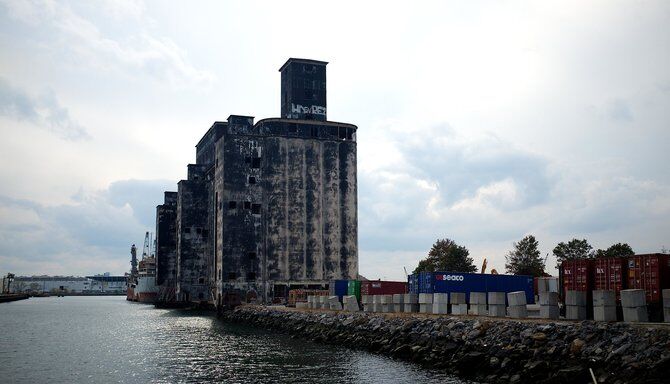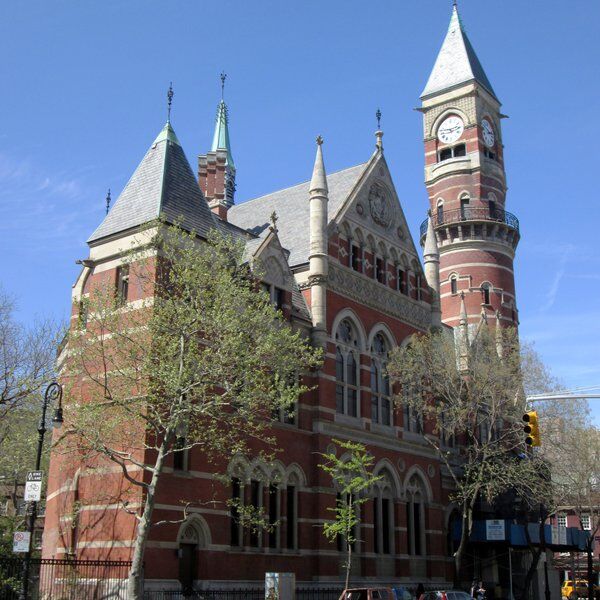Discover the Red Hook Grain Terminal
When you think of Brooklyn’s waterfront, modern skyscrapers and hip eateries might spring to mind. But perched at the very mouth of the Gowanus Canal, is a colossal piece of history: the Red Hook Grain Terminal. This industrial giant, with its towering concrete silos, is a fascinating relic from a bygone era—a testament to New York City's ambitious attempts at modernizing its trade routes.
Constructed in the 1920s, this imposing building is a 12-story monument to a time when massive grain shipments were the norm and engineering marvels were born to meet those needs. Despite its grand design and impressive scale, the terminal quickly earned a cheeky nickname: the “Magnificent Mistake.” But considering the terminal was built seven years after Brooklyn’s last grain terminal had been converted to a storage warehouse, it's no wonder its construction was later considered a mistake.
Today, its silent, abandoned form—often draped in black mold—is a reminder of the industrial dreams that once animated the Brooklyn waterfront.
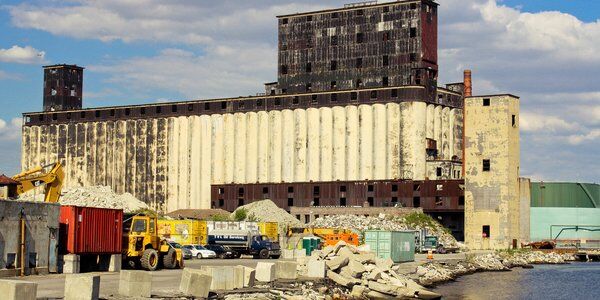
The History of the Red Hook Grain Terminal
An Ambitious Beginning
In the early 20th century, New York State was determined to upgrade its aging canal system, replacing the narrow, historic Erie Basin Canal with a sprawling network of waterways known as the New York State Barge Canal System. This project aimed to connect the Great Lakes with the Hudson River, but by 1918 the revamped canal was operating at only a fraction of its potential.
Enter the idea of building a state-run grain terminal in Brooklyn. The logic was simple: New York lacked sufficient storage space for the booming volumes of grain arriving by barge, as the existing facilities were already under the tight control of railroad companies. To solve this, the state envisioned a massive, centralized grain elevator that would capture and store the bounty of the Great Lakes region.
Building a Colossal Structure
In just 16 months, engineers and builders raised a 12-story, 429-foot long structure at the foot of Columbia Street. The project cost a whopping $2.5 million. One of the most striking features of the building is its 54 silos, each engineered with 90-foot-high concrete sections poured in a mere 13 days to create a virtually bomb-proof enclosure for the grain. These silos weren’t just big; they were built to withstand the risk of fire from the combustible grain stored within.
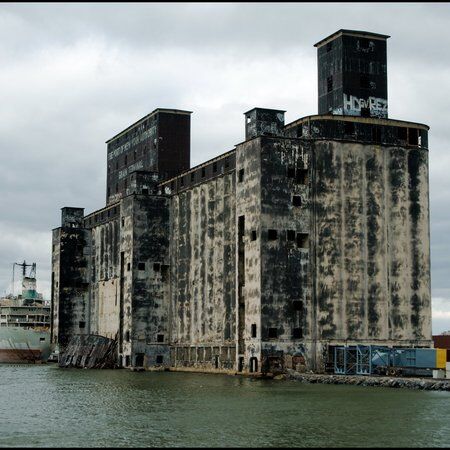
Operation, Obsolescence, and the Passing of an Era
The terminal opened its doors on September 1, 1922, during a time when grain shipping was still considered a cutting-edge business. However, even as it began operations, the project was met with skepticism. Prominent figures joked that while the terminal might serve well in emergencies, everyday use would be limited.
As the decades passed, the anticipated boom in canal shipping failed to materialize. Grain shipments dwindled, and by 1925, the ambitious barge canal and its giant terminal were already being labeled as costly luxuries rather than essential infrastructure.
After enduring years of financial struggle, the terminal was handed over to the Port Authority of New York and New Jersey in 1944. Under the new management, there was a brief resurgence in operations, yet the shifting dynamics of global trade—exacerbated by the opening of the St. Lawrence Seaway in 1959—sealed the building’s fate.
In 1965, after decades of underperformance, the Red Hook Grain Terminal was officially deactivated. The once-bustling hub gradually fell into disuse, and by the late 20th century, it had become an abandoned relic, its silos shrouded in layers of black mold.
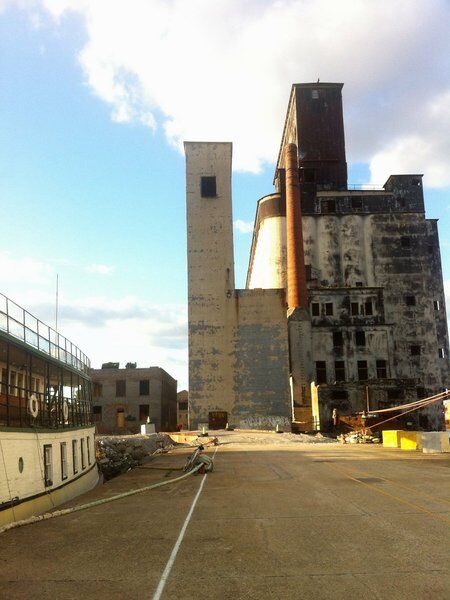
Recent History: Collapse, Decline, and Reuse
The Slow Fade of an Industrial Giant
As the decades marched on, the Red Hook Grain Terminal’s heyday faded into memory and its loading piers and conveyor systems were removed in 1987. The collapse of the local grain trade was only a small part of a larger decline in Red Hook’s industrial landscape.
As shipping methods evolved, many factories and warehouses emptied out, leaving behind vacant lots and weathered docks—a stark contrast to today’s trendy neighborhood cafes and craft breweries.
Reimagined Spaces and Pop Culture
Despite its disuse, the terminal has found a second life as a backdrop for creative projects. Music video directors have turned its raw, industrial aesthetic into a cinematic canvas—Lorde’s video for "Team" and David Bowie’s "Valentine’s Day" saw parts of the terminal featured, adding a cool, edgy vibe to its legacy.
Not to mention, in the summer of 2002, the terminal also played host to an aerial dance performance, where performers scaled its silo walls amid giant video projections, turning the site into a stage for urban art.
Environmental challenges and controversial redevelopment proposals have also been part of its recent narrative. Efforts to expand the site through landfill projects and debates over toxic materials have stirred local concerns, balancing the excitement of urban renewal with the need to preserve the environment and community trust.
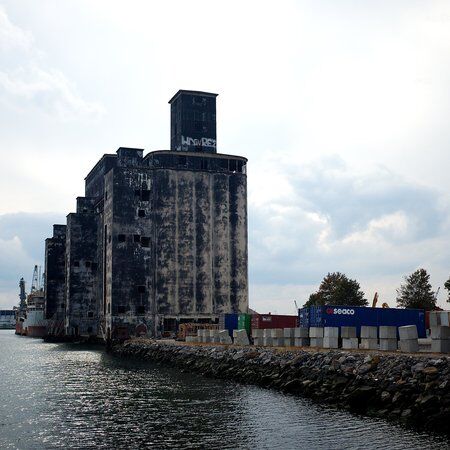
Features of the Red Hook Grain Terminal
The Red Hook Grain Terminal isn’t just about its grand history—it’s also about the impressive design details.
Here are some of the terminal’s standout features:
- Mighty Silos: The terminal houses 54 circular silos, each standing 120 feet tall with walls built to be as thick as eight inches. These were originally designed to safely store combustible grain in an almost bomb-proof environment.
- Robust Construction: Built to endure the challenges of industrial use, the terminal’s reinforced concrete structure was an engineering marvel of its day. Its durability has allowed it to weather decades of neglect and still remain a powerful visual presence.
- Operational Legacy: Once a key component of a grand plan to rejuvenate New York’s grain trade, the terminal featured a 1,200-foot-long conveyor belt that efficiently transferred grain from ships to storage—a process that, while obsolete today, showcased cutting-edge engineering of the 1920s.
- Cultural Influence: Beyond its industrial function, the terminal has influenced architectural design across the globe, inspiring early Brutalist designs and even earning nods from modern architects like Le Corbusier, who saw American grain elevators as heralds of a new architectural era.
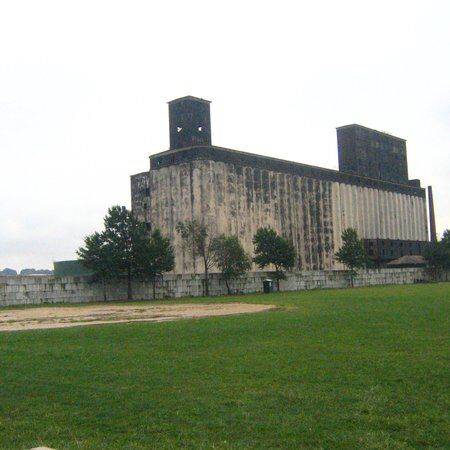
Visiting the Red Hook Grain Terminal
Visible from nearby Red Hook Park and even from the F train stop on Smith Street, the terminal’s immense presence dominates the landscape. While its current use is more as an occasional event space and a playground for photographers and urban explorers, its weathered exterior tells the story of a once-ambitious project that has now been repurposed as a historical landmark.
A word of caution: the site is technically off-limits, and trespassing can result in fines. However, many still find creative ways to capture its haunting beauty from afar, making it a favorite subject for those who appreciate urban decay and history in equal measure.
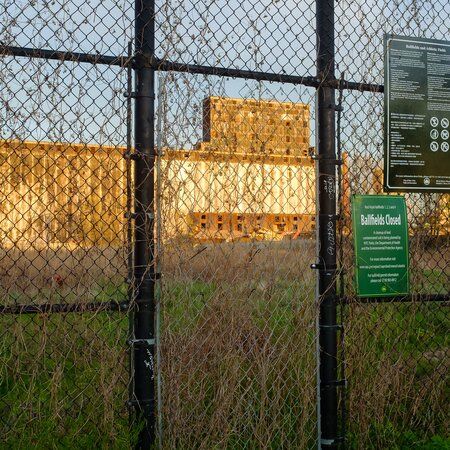
Explore Beyond the Red Hook Grain Terminal with CityDays
At CityDays, we believe every landmark has a story—and every story is an adventure waiting to happen. Beyond the captivating history of the Red Hook Grain Terminal, we delve deeper into the city's hidden gems and iconic landmarks, with unique scavenger or treasure hunt tours.
Scavenger Hunt tours are a great way to bring family and friends—or even dates and colleagues—together for an afternoon of great fun and adventure, solving clues and snapping photos. Clues will lead you to the big sights and those that you'd walk straight past.
For more information about our New York Hunts then click here: NYC Scavenger & Treasure Hunts | CityDays.
